The Depopulation Trade: An Unruly thesis
The population collapse is much faster than predicted, and happening now. This is the Unruly investment thesis for the coming century
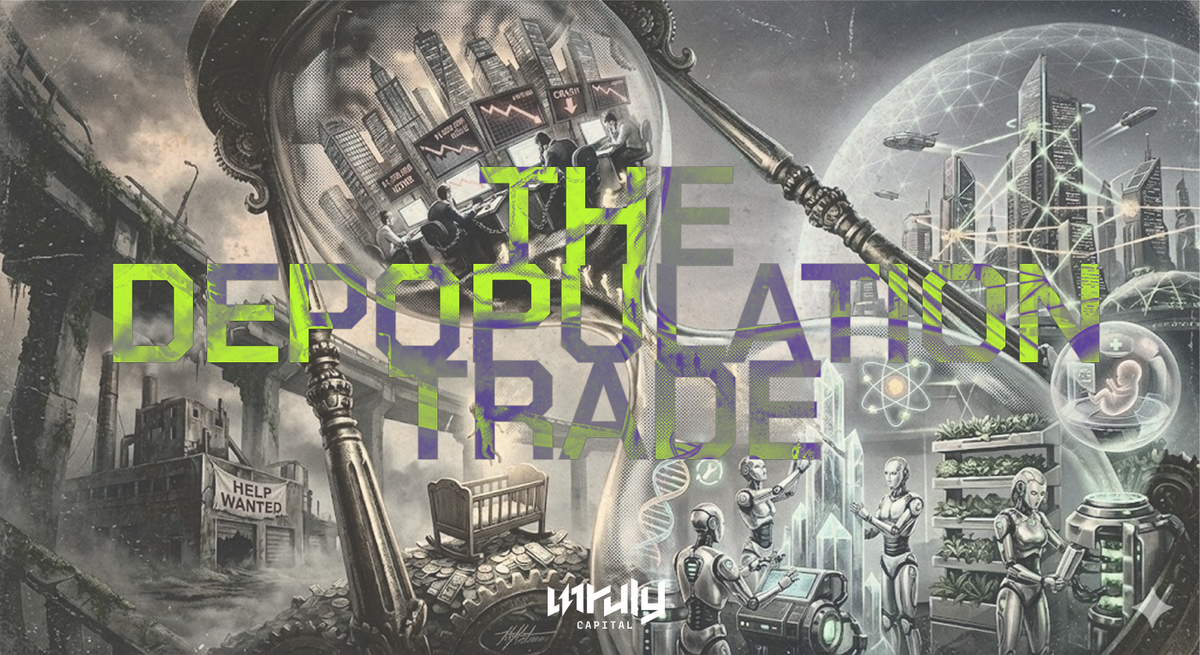
Table of contents:
- Part I: The population collapse is much faster than predicted, and happening now
- Part II: Why aren’t we having kids anymore?
- Part III: What does a rapidly shrinking human population mean for the world
- Part IV: Can we realistically do anything about it?
- Part V: How should we plan and position ourselves accordingly: the Unruly investment thesis for the coming century
Part I: The population collapse is much faster than predicted, and is happening now
I am once again here to tell you that the experts are not only wrong, they are certifiably insane. And that’s at best, because at worst they are knowingly lying out of their teeth in one of those “gentle lies”.
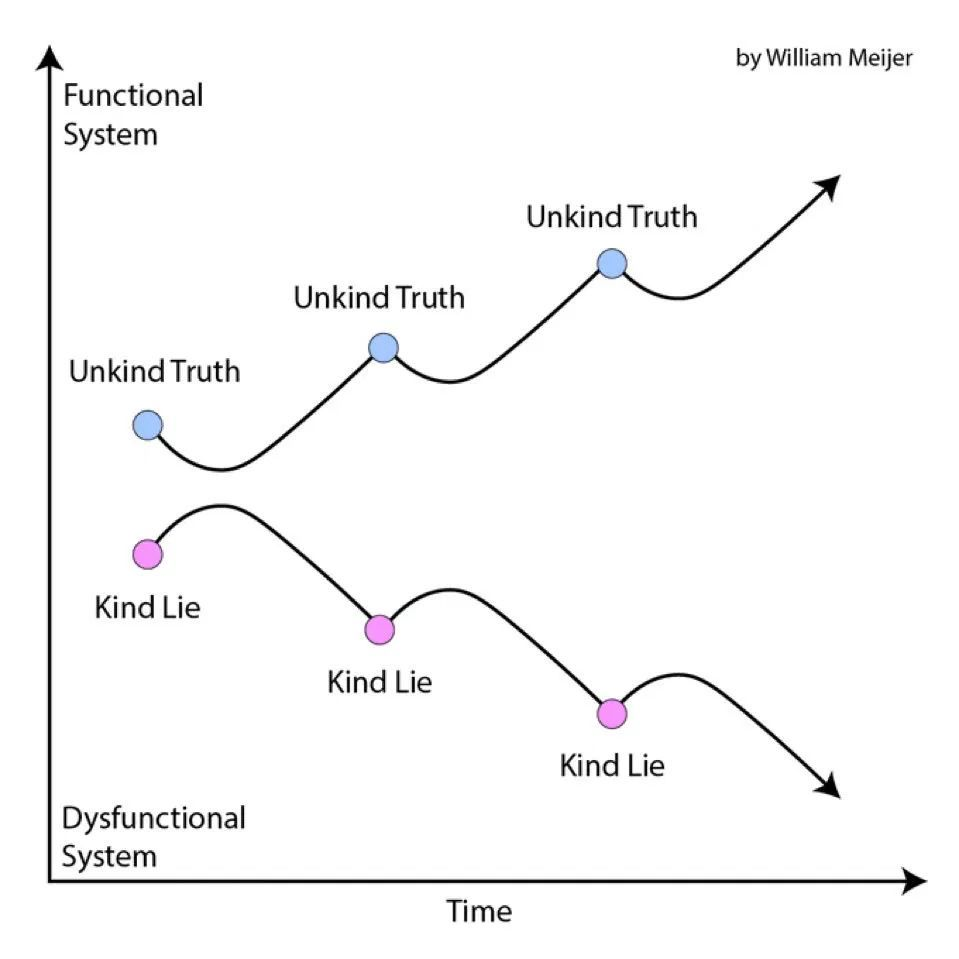
Nothing new, really. You probably all know the infamous projections of the International Energy Agency.
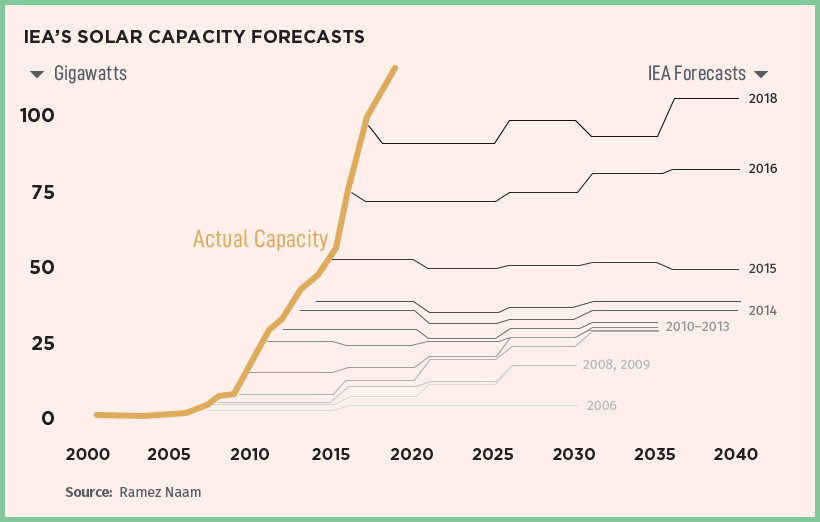
Every single year, straight in the face of evidence, the IEA has projected a flattening of the curve of installed solar production capacity. And every single year, without fail, actual deployed solar capacity goes vertical.
Now, guess where else these experts are being completely wrong and oblivious? Yep, fertility rate projections.
We will start with an absolutely beautiful, hang-it-in-the-Louvre type of graph, and won’t be using South Korea, China or Europe.
These are the birth rates for a few Latam countries. The blue lines are the UN projections, and the red is the oh-all-to-real smack-in-your-face reality. They are plummeting and no one seems to want to acknowledge it.

Some examples:
- In Colombia, the UN had projected ~701,000 births for 2024 and treated anything below ~553,000 as a 2.5% tail event. Actual registered births were about 445,000, way below their “extreme downside”.
- Similar “this should almost never happen” misses showed up in “unsuspectable” countries like Poland, Estonia, Sri Lanka, Egypt, and others.
- Thailand, which the UN assumes will rebound toward a TFR around 1.45 by the end of the century (editor note: LMAO), is already reporting fertility around ~1 and still falling.
If you were to read or listen to the UN’s “World Population Prospects” you would still get a relatively comforting story: global population peaks around 2084 at ~10.3 billion and only then begins to slowly decline. But actual fertility data worldwide keeps undershooting previous projections, by a lot - so much that the UN itself has to lower its own estimates all the time.
The reality, that is honestly hard to digest, is that we are going extinct. You can roll your eyes, think that it’s impossible, that we’re a bunch of Musk-bootlicking lunatics, but if you put on your bias-free thinking cap for a second, let me try to show you that human extinction is not really that far away.
The graph to end all graphs
This is the most important graph you’ll see in this decade, maybe more.
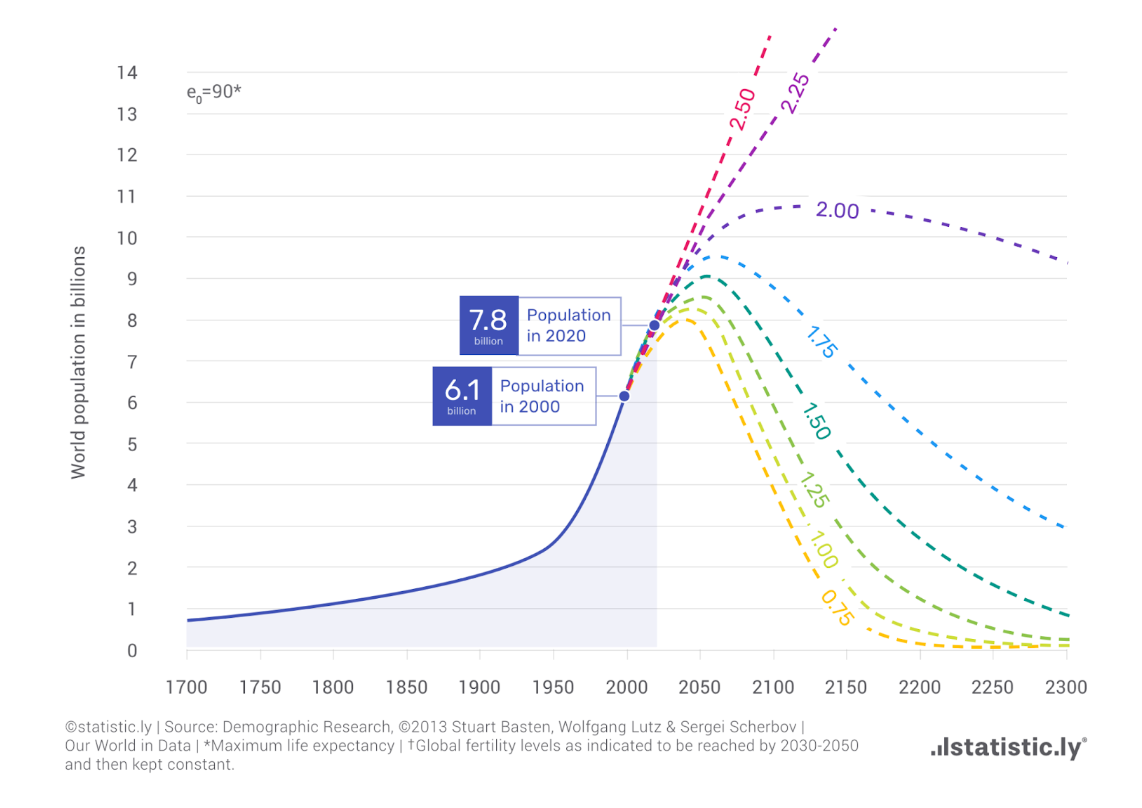
When you’re on an exponential curve, it’s very hard to really rationalize the speed and the slope. Double the grains of rice doesn’t seem that much, but you’re soon bankrupt. Seeing the exponential on the way down is also not immediate, so getting a clear representation definitely helps.
Take a moment to look at it, and see what the take away is.
To me, the most striking aspect of this chart is the fact that 1.5,1.25, 1, or less, doesn’t actually matter that much. You still trend to zero in all scenarios at warp speed.
What is very different, is the slope at 2+, which is where we’ve been told we are and will be.
At 2+ we slowly decline, but whatever, definitely manageable.
At 1.5-, we GO EXTINCT.
The UN already predicts a 1.5 global number for 2100, and we have seen how reliable their numbers are. You do your own math.
The thing to keep in mind is that this slide is for the total world population and global fertility rate.
Italy just printed 1.13. China is at 0.9. South Korea is at 0.75. India is already below replacement levels. Developing countries’ TFRs are falling even faster than developed countries.
The only thing keeping up the global numbers is Africa (TFR of 4 heavily weighted to Sahel and Central Africa, with Northern Africa having European numbers already), which will add a billion people this century. The billion people that China will lose.And even there, Africa’s TFR is dropping faster than most other countries.
So, we can argue about when the peak happens, when the “global” peak happens, and so on, but the direction is clear: by 2100 the west and the developed world will have the population levels of the early 1900s. That was a very different world.
Fertility transitions have historically been one-way. We have no historical example of it sustainably bouncing back to 2.1+ without massive exogenous shocks.
There is no going around it: the developed world is going extinct.
Part II: Why aren’t we making kids anymore?
Understanding the structural reasons for population collapse is not the goal of this piece, as there are a large number of contributing factors, and they all stir up quite a few emotions from people. I think there’s already plenty to be upset about in the first part of the post, so we can minimize it here.
But a few things are worth understanding to understand how structural this is, and how hard it is to reverse.
Child mortality
The #1, core reason and also most awesome reason is that we have virtually eliminated early childhood mortality. If you look at historical, and likely pre-historical, childhood mortality, we have been on an incredibly stable ~50% trend line.
Then, with the industrial revolution, a singularity happened and the world was never the same. We are clearly trending towards ~0% and will get there soon.
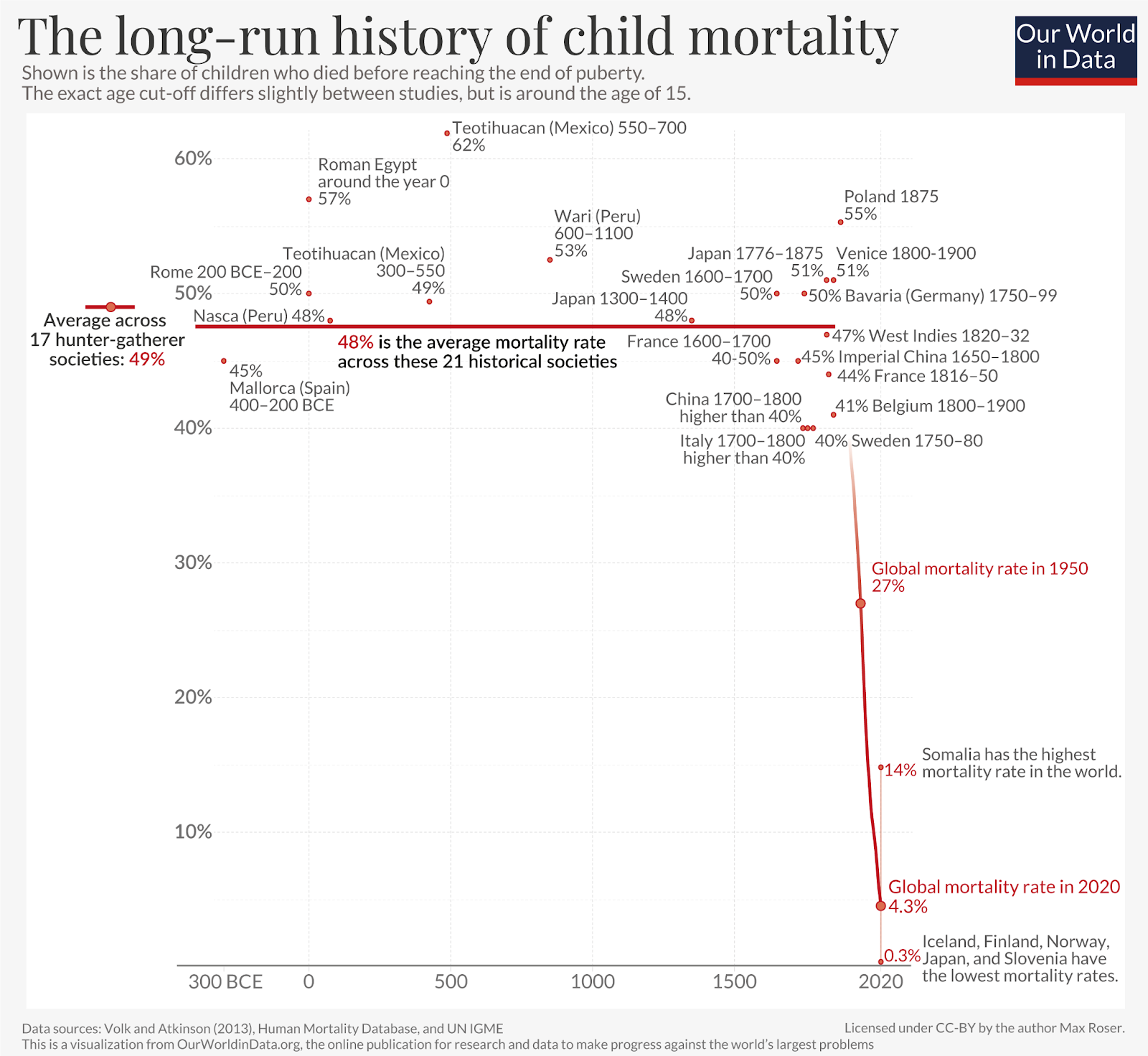
What does this mean? That historically, the evolutionary urge to pass on your genes meant you needed to have a bunch of kids so that some of them would make it to reproductive age.
Now, almost all kids make it to reproductive age, so with one or two kids, you’re virtually guaranteed to pass on your genes.
As soon as we fixed mortality rates, we had an explosion in the global population because people were used to making 5-10 kids and now they were suddenly all surviving to reproductive age. You don’t need too much time to get a whole lot of other people around.
(This, incidentally, is what is happening in Africa right now.)
The other reasons are fairly clear to everyone already, so won’t spend too much time on them, but let’s list the most obvious (please note that quite a few of these, together with lower child mortality, are positive developments on their own):
- lower religious adherence
- much later marriage age
- contraceptive technologies
- equal work opportunity for women
- the big career impact of having kids
- massive rise in feminism, gender polarization and rejection of the need to have a male figure companion
- concentration of work opportunities in expensive and non-kid-friendly urban areas
- kids moving from being assets to liabilities
- “cultural” reasons mostly tied to unlocking essentially infinite leisure experiences that aren’t particularly easy to enjoy with kids
- psychological reasons (not wanting to bring kids into a “bad” world)
- minor, but still present, actual fertility problems mostly in males (sperm count and motility are in their own exponential collapse)
- and, obviously, affordability.
I think the last point is worth expanding on, because I think it’s often misunderstood, at least in the actual “causes” of it. Probably not surprising to attuned readers, I strongly believe that the affordability crisis comes from the plague that is fiat money.
Our current debt-based, infinitely printable money is what is fueling the global rise in inequality - helping rich asset owners grow more wealthy as real assets prices skyrocket while wages continue to get suppressed, and people have no way to transport money into the future. This is preventing technology from its natural role in bringing deflationary pressure and quality of life improvement.
In any case, all of these are probably somewhat valid reasons, but this trend is not something that happened in the last few decades.
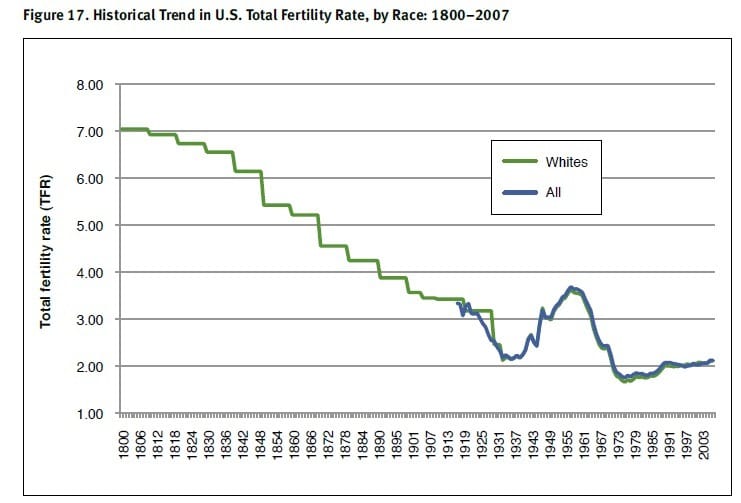
This is one of the few charts I’ve found going back to the 1800s and it clearly shows that the trend has been there for a while.
Therefore a rational conclusion is that even if we were to somewhat reserve or solve all the above reasons, we would probably just be able to slow down the trend, but not reverse it.
Part III: What does a rapidly shrinking human population mean for the world
Before we move onto possible solutions or adaptations, let’s briefly explore what a world with drastically fewer people means.
This is a somewhat more subjective chapter, as many people have been advocating for “degrowth” and lower populations for some time now, believing that with less people around there would be a number of benefits including:
- Lower real estate pressure
- Lower environmental damage pressure
- Lower real resource pressure (eg. water, arable land, clean air, fish, etc.)
- Less overtourism
- More of the pie for everyone
But I’ll still try to paint a little picture of what this all means.
Most of the things we have grown accustomed to, at least in the west, are only possible because of the massive growth we’ve been able to achieve in the past century. That growth came from a massive growth in population, especially the able-bodied working age population.
If we suddenly start having a much lower number of working age people, we kiss all of that bye bye.
We can make the argument that we can make do with much less than we have now, obviously - but the issue here isn’t that we will reduce populations 20,30 or even 40% and be merry, the main issue really is just the slope and speed of the collapse.
I am writing this from an airplane, and the only reason I can travel on a Bergamo to Helsinki flight on a random Tuesday morning, is because there are other 200 people that somehow needed to do the same thing.
If suddenly there are only 50 people that need to do it, bye bye magical 50 bucks BGY-HEL Ryanair flight. If there aren’t that many BGY flights, the reason to have BGY as an airport suddenly disappears.
You can easily see where this is going. We have built and are building infrastructure and services with the assumptions of continually expanding, or at least stable, populations - when that assumption breaks, everything else goes with it.
Highways, rail networks, utilities, grids, hospitals, universities, entire city centers: their fixed costs are justified by a large, dense population and tax base. Shrink the denominator far enough and the numbers fail.
We can adapt, but it’s not going to be painless.
Where I live, and I’ve noticed the same in quite a few different countries, you can find “help wanted” signs everywhere you walk. Everyone is hiring, and no one can find employees.
This need is felt even more in companies you won’t see on main street, but if you travel to industrial areas, you can easily see that a big blocker to industrial growth is now the ability to hire.
Labor scarcity (skilled and unskilled) is largely already here. We get pitched by founders all the time the fact that skilled labor shortage is the #1 problem in various different industries. This will only get worse as we start lowering each year the number of people entering the labor force.
We can slow down the exiting of the labor force with higher pension ages, but it isn’t exactly a popular thing to do.
But won’t AI take all the jobs?
I sometimes hear the argument that we actually have the opposite problem, one in which AI is taking all of the white-collar jobs and we will therefore have a surplus of workers.
It’s very much possible, and indeed likely, that AI continues its improvement curve to where a lot of current jobs are no longer needed.
As a society, we’ve always succeeded at utilizing the workers we have, inventing new types of jobs, but even if we assume AI taking over a large number of white-collar jobs, the biggest issue here is focused on blue collar and highly qualified jobs, and we are not really going to be able to reskilling a vast number of laptop jobs into highly skilled manual jobs or even unskilled physical labor.
But the main, and more important, consequence is one that is a daily discussion topic on newspapers and talk shows, albeit without any solution: the financial burden of an aging population.
The equation doesn’t take an Einstein to get solved.
(Less young people working * tax) / (More old people + living longer) = tends to 0
Nation states, who are already indebted worse than a drunken gambling addict, have absolutely no clue whatsoever as to how they will keep financing their gluttonous spending habits with a rapidly growing pile of liabilities (mostly in the form of pensions and healthcare costs, but without forgetting an aging infrastructure built for large populations) while their taxable base of young workers rapidly evaporates.
Man am I glad I never got into politics, I honestly have no idea how people get to sleep with that kind of unsolvable responsibility (assuming they understand it and they care about it).
Therefore, the harsh reality of a rapidly depopulating world means:
- Crumbling unused, and soon unmaintainable and therefore unusable, infrastructure
- Less services available for the population
- Unsustainable burden on current nation states and the fiat monetary system
It also means
- Lower real estate prices, yay?
- Less tourists in Venice, yay?
All of this leads me to predict a sharp rise in adversarial scenarios, both between nation states, between states and their subjects, and between states and new emerging alternatives.
When you see the world with this lens, network states start moving from a wild Balaji fantasy to an inevitability. We are already seeing global jurisdictional competition with golden visas being offered in various countries, and it’s hard to imagine this scenario disappearing, as nation states continue to look for creative ideas on how to get more tax receipts.
The other obvious outcome is capital control and confiscation, as the state starts to phagocytize itself - in its final autophagy phase, it will consume every last resource it can put its hands on (including taxmaxxing).
Part IV: Can we realistically do anything about it?
Here as well, it’s not particularly complicated.
Possible solutions, at least for the west and developed world:
- Increase births
- Import workers
- Reduce the need for workers
Increasing births
States have some fairly powerful levers they can pull, and we have some evidence that state incentives directed towards fertility have worked. Sadly, I don’t think they >2.1 work.
We expect nation states to deploy heavy incentives in the coming decades, but with their usual lag times and inefficiencies (plus unforeseen consequences)
But even assuming that 1) states are able to finance these incentives and 2) we’d be able to somewhat slowly make our way to improved numbers, we now have a century already somewhat baked in, which makes most of the issues outlined above unescapable. The longer it takes us to improve fertility rates, the higher we'll need to get them to make up for the decrease of older cohorts.
Import workers
The current solution the west has adopted has been massive immigration.
The US started this earlier, with a much more intelligent approach, and it can be credibly said that it is one of the contributing reasons why it is now at the peak of its imperial phase: they have been importing the best of the best people from all around the world for decades.
(Coincidentally, this has also helped a lot with their fertility rates as H1B workers’ spouses can’t legally work on H4 visas - likely leading to more kids (worked for us as well)).
This would be a fine solution if not for the following points:
- The whole world has the same trends, so there won’t be enough immigrants for every country
- Immigrant integration is an unsolved global problem
- The numbers necessary are astonishing, Italy would need half-a-million people every year, and growing
- Massive immigration leads, in a small amount of time, to social tension, and eventually to ethnic replacement
- The TFR of immigrant populations quickly reverts to the native TFR, therefore needing constant replenishing
Now on the last point people will make their own personal judgements as if that’s good, bad or it just is. But it’s intellectually dishonest (and financially irresponsible) to refuse to acknowledge the fact.
For the above reasons, I don’t think that massive sustained immigration is a viable path.
Reduce the need for workers
And here we are, as usual, the last and only potential solution.
If we don’t have enough humans to provide the services we need and build or maintain the infrastructure we want, we will need to create synthetic labor forms be them humanoids or task-specific robots.
Robots (and artificial intelligence) drastically reduce the need for human work (but rapidly increase the need for energy).
It will come as little surprise that I think we have no choice but to automate everything, build a billion robots, transfer work to machines and move into an energy-bound society rather than a work and human bound society.
Part IV: How should we plan and position ourselves accordingly: the Unruly investment thesis for the coming century
And we finally can come to Unruly’s investment thesis that we expect to be deploying for many years to come, alongside smaller, shorter term theses that are also quite obvious (the decentralization of the real world, the end of the sugar-era, etc.).
This is clearly a very long term world view, but we strongly believe that the effects will start to be felt sooner than we would otherwise imagine.
It might take 200 years for the population to collapse, but skilled labor is already in short supply.
It might take 400 years for the nation-state Westphalian order to collapse, but a lot of services will start to break soon (and are already doing so).
Our thesis for the coming century
structural population decline is happening much faster than all the experts have been and are predicting (at least publicly). We need to prepare today for a radically different world in which the main implications are:
- Not enough skilled labor to provide services and maintain our current infrastructure / quality of life
- Nation states failures under the ridiculously increasing liabilities in pensions and healthcare, coupled with the fast declining tax receipts as the share of net-contributing working age population disappears
- Rapid and shocking new migratory flows enabled by jurisdictional competition and portable sovereignty
- A likely highly adversarial global scenario between old nation states, new network states, and citizens.
What that translates into:
- Billions of robots
- Robotic services
- Ancillary: Robotics financing, deployment, maintenance, etc.
- Energy: edge energy generation, autonomous charging, etc.
- Billions of agents
- Fertility tech
- People are having kids later, and having a hard time procreating, therefore any and all solutions helping people have more kids will thrive
- Biotech
- Social
- Financial
- People are having kids later, and having a hard time procreating, therefore any and all solutions helping people have more kids will thrive
- Longevity
- We need to keep people around longer, ideally in a productive capacity, if we don’t want the collapse to happen even faster
- “State” infrastructure:
- Nation States will get to a point where they won’t be able to provide a whole set of services that are currently their complete monopoly:
- Currencies
- Pensions
- Healthcare
- Growth incentives / global coordination
- Identity
- Infrastructure
- Security and defence
- Trust (for commerce, trade, etc.)
- Peace
- We see an obvious need for companies providing these services directly to citizens, as well as powering States or by helping new states, as well as partnering states old and new
- Nation States will get to a point where they won’t be able to provide a whole set of services that are currently their complete monopoly:
- Privacy and sovereignty
- In an adversarial world, individual privacy, security and freedom are not a God-given right anymore and will need to be heavily defended with the help of new technology and incentive systems.
Shortened,
Unruly invests in founders preparing society for the shift to an energy-bound rather than labour-bound world, in the coming age of rapid population decline, complete automation, biotechnological singularity and post nation states order.
We have already started investing on this thesis and have backed companies in fertility (Vertility, Sita Bio), robotics (Kaikaku, Loki, AUAR), robotics financing (Tangible Finance, Substrate Industries) longevity: (Level Zero, Aeon Life, Permanence Bio) and post nation state infrastructure: (Protector, Infinita, Morpho).
Please note that this blog post purposefully omits the rapidly declining average global human and societal intelligence, its reasons, and what new forms of synthetic and artificial intelligence mean for the world. This topic is widely studied and debated and this piece wouldn’t have added much to the discourse, but the reader can safely try to autonomously overlap this with the rest of the content.
It also deliberately avoids the US vs China vs Europe debate, but obviously subtends that in the short term, this will be a critical topic as implied by the post in other areas.
About Unruly Capital
Unruly Capital is a research institution focused on understanding our rapidly changing world.
It invests in founders preparing society for the shift to an energy-bound rather than labour-bound world, in the coming age of rapid population decline, complete automation, biotechnological singularity and post nation states order.
